This website uses cookies so that we can provide you with the best user experience possible. Cookie information is stored in your browser and performs functions such as recognising you when you return to our website and helping our team to understand which sections of the website you find most interesting and useful.
WeHanzi
How to Learn Mandarin Chinese Using Flashcards
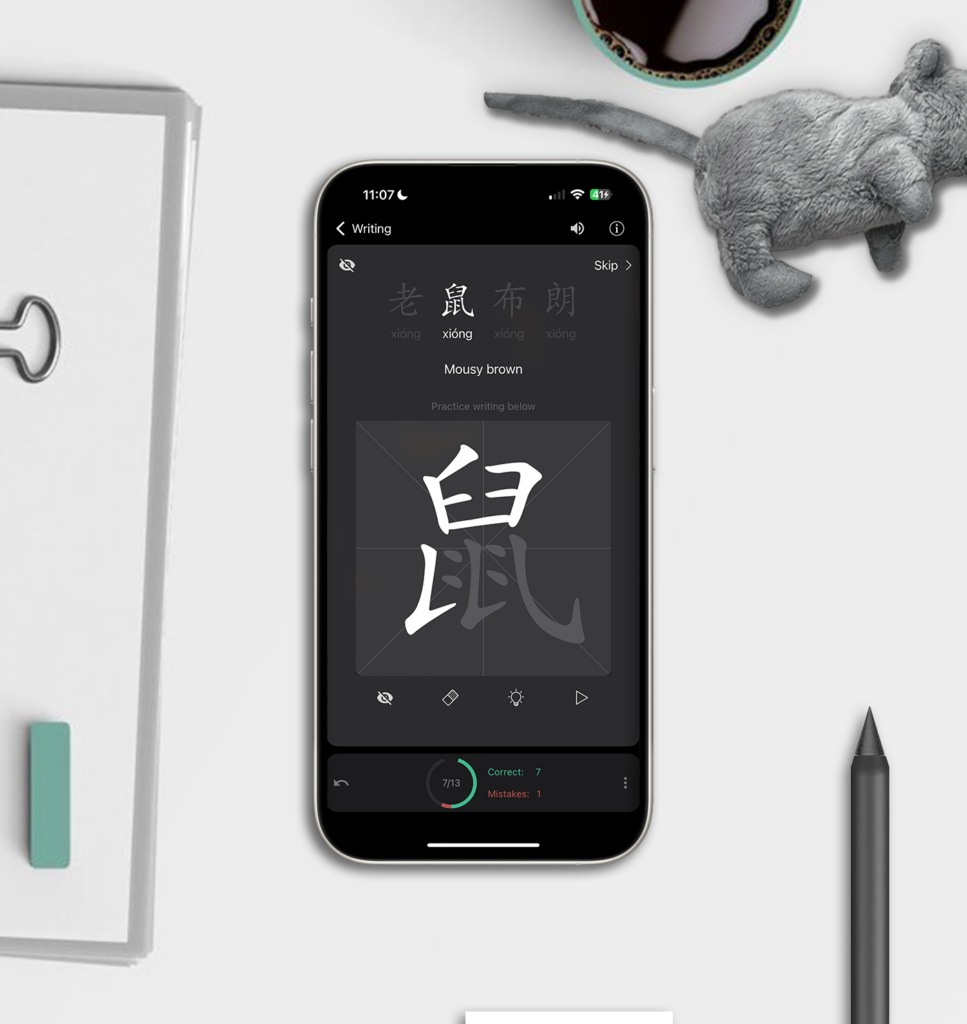
The Challenge
Mandarin has a reputation as a difficult language to learn and a lot of that is to do with the need to remember up to 5000+ Chinese characters.
I’ve been learning Mandarin for the last few years and this has been the hardest part of my experience by far.
When you learn Chinese, there are two main systems to gauge your progress. In Mainland China, they use a grading system called HSK and in Taiwan they use a system called TOCFL. These are standard exams you can take to prove you have a certain level of proficiency. Each exam has a set list of words you need to know.
HSK vs TOCFL Levels
When starting your Mandarin learning journey, you’ll come across two major proficiency tests: the HSK (Hanyu Shuiping Kaoshi) and the TOCFL (Test of Chinese as a Foreign Language).
Here’s how they compare:
| Level | HSK (# words known) | TOCFL (# words known) |
|---|---|---|
| 1 | 150 | 300 |
| 2 | 300 | 500 |
| 3 | 600 | 1000 |
| 4 | 1200 | 2500 |
| 5 | 2500 | 5000 |
| 6 | 5000 | 8000+ |
At lower levels (HSK 1-2, TOCFL 1-2) you can handle everyday basic conversations.
Intermediate levels (HSK 3-4, TOCFL 3-4) allow you to converse comfortably in various topics.
Higher levels (HSK 5-6, TOCFL 5-6) enable you to engage deeply in professional and academic settings.
As you can see, even at the lower levels, it’s necessary to learn a lot of characters. Traditionally there are a number of approaches to take to accomplish this:
Approaches:
Brute force repetition
When native speakers learn the characters as children, they do it by brute repetition. At school they just have to repeatedly write characters again and again until they know them by heart.
This approach is effective but it doesn’t work well in the context of learning a second language for a number of reasons.
- Most learners don’t have the time to study characters for 6+ hours per day
- As adults our memory is not as plastic as the memory of children so this method is less effective
- This method is not very fun or efficient and can be very demotivating
Advantages: Natural acquisition, intuitive understanding.
Disadvantages: Slow, inefficient for adults without daily immersion, often frustrating.
Paper Flashcards
Traditional flashcards are effective for memorizing vocabulary. Paper flashcards are nice in a tactile sense and give you the opportunity to not be at a screen. When I learned Spanish (before smartphones existed) I used paper flash cards and it worked well up to about 1000 words. After that, there were just too many words and I wasted a lot of time testing myself on words I already knew.
Advantages: Physical engagement, easy to create.
Disadvantages: Becomes cumbersome with many cards, time wasted revising known words, lacks spaced repetition.
Digital Flashcards (Mobile Apps)
In the modern age, digital flashcards are by far the most effective way to learn vocabulary. They are completely portable and very flexible. It’s possible to have multiple types of different flash cards (like stroke order or tones practice) which is especially useful for Mandarin.
But the most effective thing about digital flashcards is the fact that you can use spaced repetition.
Advantages: Convenient, portable, varied practice modes (reading, writing, tones), integrates spaced repetition.
Disadvantages: Some apps can be expensive, you have to look at a screen
Hack your memory with spaced repetition
Spaced repetition is a technique that allows us to learn things far more effectively. We naturally tend to remember things well when we first see them and then gradually forget them over time. As we know something better, we can go longer and longer without forgetting it.
So when we learn something new, it’s important that we review it very soon afterwards. But as we commit it to memory, this interval can be increased.
With spaced repetition, the app automatically keeps track of how well you know a given word. Over time as you learn the word, the review interval will gradually increase.
This is much more efficient, because you are prioritizing your study time only on the words you really need to review. When I was studying characters every day, I had 1200 cards in my deck and as long as I studied every day, I could study all the due cards in 15-30 minutes.
How to Get Your Words into Flashcards
Even with digital flashcards, manually creating flashcards is tedious—typing or handwriting characters, entering definitions, pinyin, and dealing with simplified/traditional variants separately can take significant effort.
Initially I was using Anki for my flash cards and I was spending more time adding cards to my deck than actually studying.
One of the design goals for WeHanzi was to make this easier.
How to Get Your Words into Flashcards
Although WeHanzi has paid story content, the WeHanzi flashcard functionality is free.
That includes a full spaced repetition system, multiple flash card types (including stroke order practice) and easy ways to build your deck.
You can add words to your deck in any of the following ways:
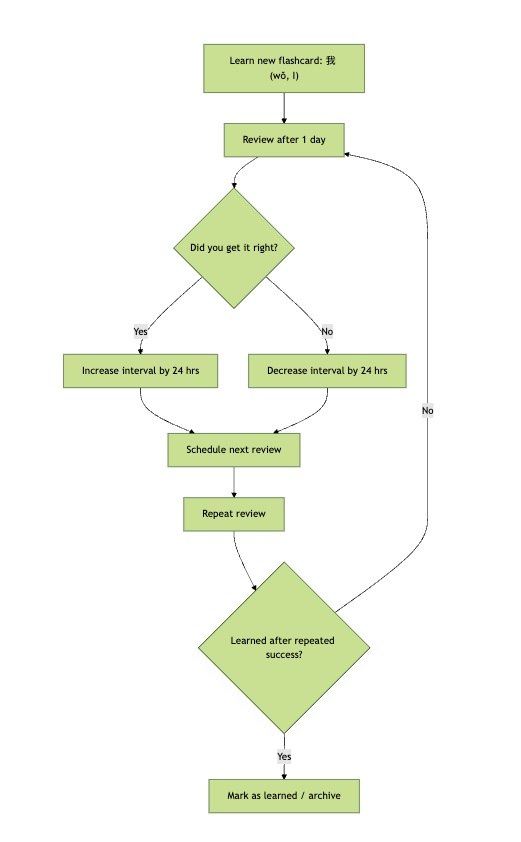
HSK vs TOCFL Levels
When starting your Mandarin learning journey, you’ll come across two major proficiency tests: the HSK (Hanyu Shuiping Kaoshi) and the TOCFL (Test of Chinese as a Foreign Language).
Here’s how they compare:
| Level | HSK (# words known) | TOCFL (# words known) |
|---|---|---|
| 1 | 150 | 300 |
| 2 | 300 | 500 |
| 3 | 600 | 1000 |
| 4 | 1200 | 2500 |
| 5 | 2500 | 5000 |
| 6 | 5000 | 8000+ |
At lower levels (HSK 1-2, TOCFL 1-2) you can handle everyday basic conversations.
Intermediate levels (HSK 3-4, TOCFL 3-4) allow you to converse comfortably in various topics.
Higher levels (HSK 5-6, TOCFL 5-6) enable you to engage deeply in professional and academic settings.
As you can see, even at the lower levels, it’s necessary to learn a lot of characters. Traditionally there are a number of approaches to take to accomplish this:
Approaches:
Brute force repetition
When native speakers learn the characters as children, they do it by brute repetition. At school they just have to repeatedly write characters again and again until they know them by heart.
This approach is effective but it doesn’t work well in the context of learning a second language for a number of reasons.
- Most learners don’t have the time to study characters for 6+ hours per day
- As adults our memory is not as plastic as the memory of children so this method is less effective
- This method is not very fun or efficient and can be very demotivating
Advantages: Natural acquisition, intuitive understanding.
Disadvantages: Slow, inefficient for adults without daily immersion, often frustrating.
Paper Flashcards
Traditional flashcards are effective for memorizing vocabulary. Paper flashcards are nice in a tactile sense and give you the opportunity to not be at a screen. When I learned Spanish (before smartphones existed) I used paper flash cards and it worked well up to about 1000 words. After that, there were just too many words and I wasted a lot of time testing myself on words I already knew.
Advantages: Physical engagement, easy to create.
Disadvantages: Becomes cumbersome with many cards, time wasted revising known words, lacks spaced repetition.
Digital Flashcards (Mobile Apps)
In the modern age, digital flashcards are by far the most effective way to learn vocabulary. They are completely portable and very flexible. It’s possible to have multiple types of different flash cards (like stroke order or tones practice) which is especially useful for Mandarin.
But the most effective thing about digital flashcards is the fact that you can use spaced repetition.
Advantages: Convenient, portable, varied practice modes (reading, writing, tones), integrates spaced repetition.
Disadvantages: Some apps can be expensive, you have to look at a screen
Hack your memory with spaced repetition
Spaced repetition is a technique that allows us to learn things far more effectively. We naturally tend to remember things well when we first see them and then gradually forget them over time. As we know something better, we can go longer and longer without forgetting it.
So when we learn something new, it’s important that we review it very soon afterwards. But as we commit it to memory, this interval can be increased.
With spaced repetition, the app automatically keeps track of how well you know a given word. Over time as you learn the word, the review interval will gradually increase.
This is much more efficient, because you are prioritizing your study time only on the words you really need to review. When I was studying characters every day, I had 1200 cards in my deck and as long as I studied every day, I could study all the due cards in 15-30 minutes.
How to Get Your Words into Flashcards
Even with digital flashcards, manually creating flashcards is tedious—typing or handwriting characters, entering definitions, pinyin, and dealing with simplified/traditional variants separately can take significant effort.
Initially I was using Anki for my flash cards and I was spending more time adding cards to my deck than actually studying.
One of the design goals for WeHanzi was to make this easier.
How to Get Your Words into Flashcards
Although WeHanzi has paid story content, the WeHanzi flashcard functionality is free.
That includes a full spaced repetition system, multiple flash card types (including stroke order practice) and easy ways to build your deck.
You can add words to your deck in any of the following ways:

- Add words from any of our free pre-made word lists
- Add a word by long clicking a character in a lesson
- Add a word by searching in the dictionary
- Add a word manually and then generate the pinyin, zhuyin and simplified / traditional variant using auto complete
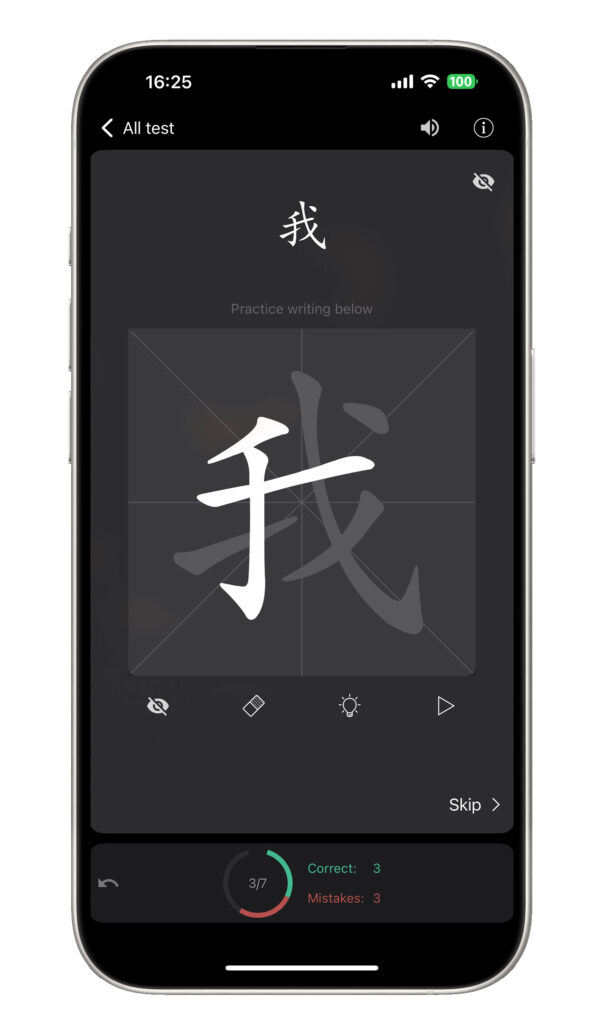
Writing Practice
Draw strokes directly in the app.
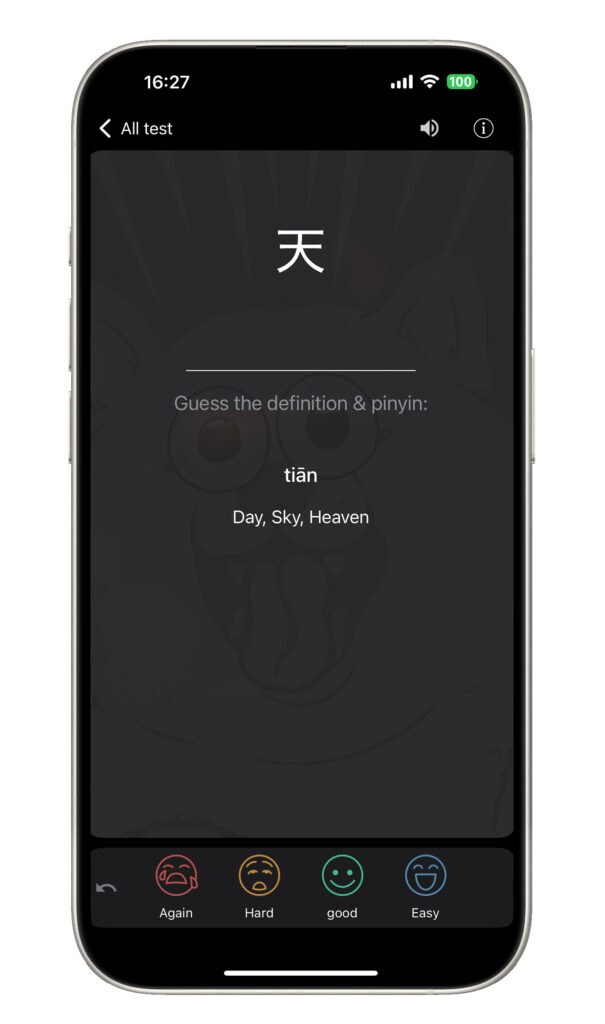
Reading
Recall the definition and transliteration from the character.
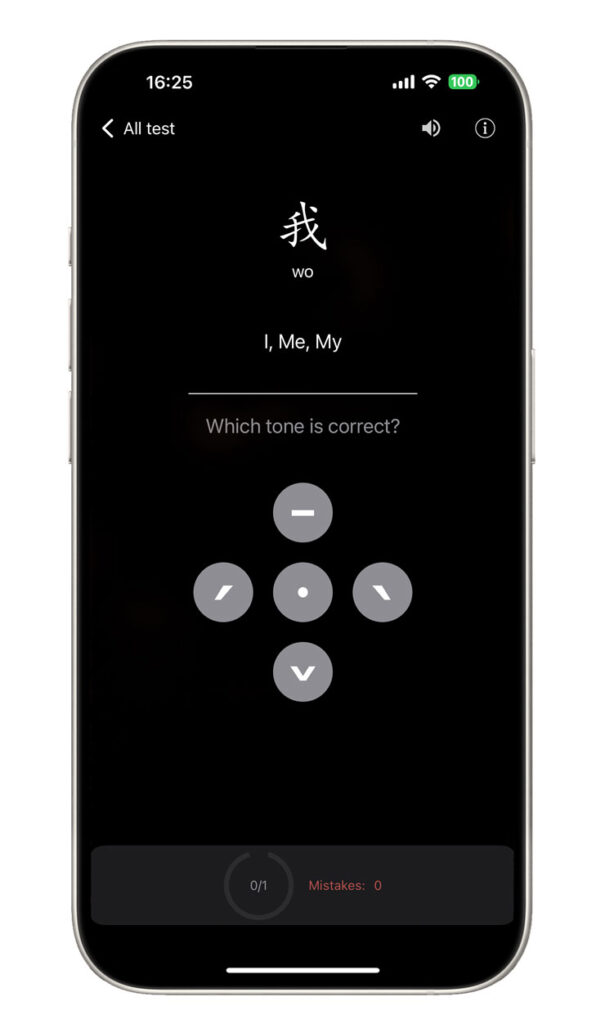
Tones
Identify the correct tones.

Recall
Remember the character based on definitions.
Hand Writing Practice
If you want to practice your Chinese writing you have a number of options. The WeHanzi flashcard system has a stroke order practice option available.
But if you want to practice your hand-writing, you can check out the free writing practice worksheet creation tool.
Hand Writing Practice
If you want to practice your Chinese writing you have a number of options. The WeHanzi flashcard system has a stroke order practice option available.
But if you want to practice your hand-writing, you can check out the free writing practice worksheet creation tool.
